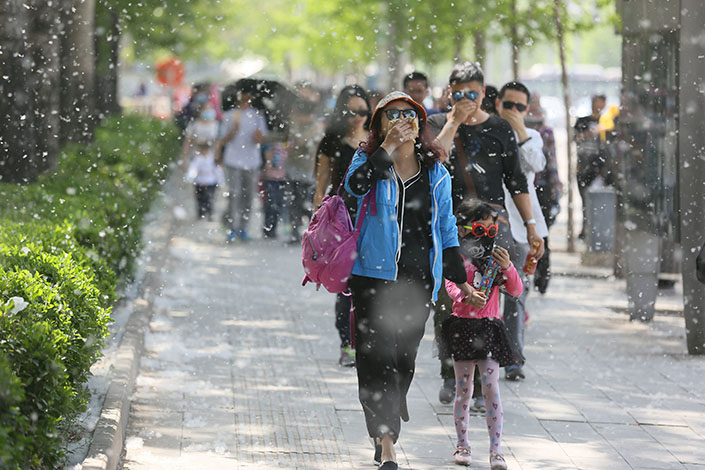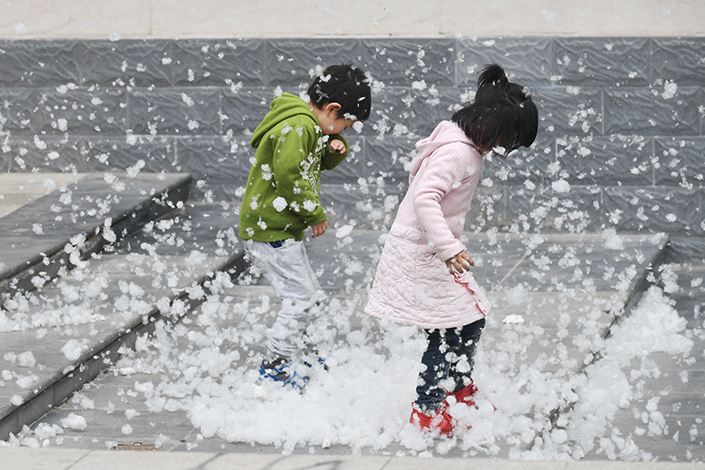Beijing Tree Pruners, Allergy Sufferers Stage Poplar Revolt

(Beijing) — This spring, gardeners armed with pruning shears and sterilization shots are roaming the streets of Beijing hunting for the number one enemy of the public — poplar and willow trees that shed pollen, clogging both noses and vehicle radiators.
The city’s landscaping authority has declared war saying it wants to stop 2 million trees from shedding pollen through sterilization and other means by 2020.
The Chinese capital is covered in snowflake like pollen for seven to 10 days in April each year. Exposure to it can lead to skin rashes, allergies, coughing and other respiratory problems, according to the Beijing Municipal Bureau of Landscape and Forestry. Pollen can also cause fire hazards or traffic accidents by blocking vehicle radiators.
 |
Two children play with catkins falling from poplar trees in Wangfujing Street in Beijing, China, on April.8, 2017. Photo: Visual China |
Poplar and willow trees were planted en masse in the capital in the 1960s and 1970s, because they were considered a cheap way to green the city. The species grew faster and cost less to maintain compared to alternatives such as ginkgo trees.
But in hindsight, that may have proved to be the wrong choice. The forestry bureau says it plans to sterilize or remove blossoms from 400,000 trees this year. These efforts won’t make pollen from female poplar and willow trees totally disappear, but it will not create “any nuisance or pose hazards to the public by 2020,” a statement on Wednesday from the forestry bureau said.
Critics of the move like Shen Guofang, a member of the Chinese Academy of Engineering, say benefits from these trees far outweigh the inconvenience and potential hazard from pollen. Willow and poplar trees are known to absorb more carbon dioxide and help clean the air.
And to take down the trees in one clean swoop will not only leave ugly vacant spots in the city, but will hurt the existing ecosystem, he warned.
Workers on ladders injecting trees with chemicals to stop them from flowering have become a common sight in the Chinese capital in recent weeks. But, only 50,000 willow trees have been sterilized so far due to cost constraints, according to Che Shaochen, head of a unit overseeing plant conservation at the Beijing Institute of Landscape Architecture. The government did not say how much it costs to sterilize a tree.
Contact reporter Li Rongde (rongdeli@caixin.com)

- PODCAST
- MOST POPULAR






